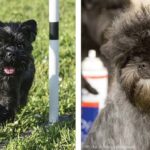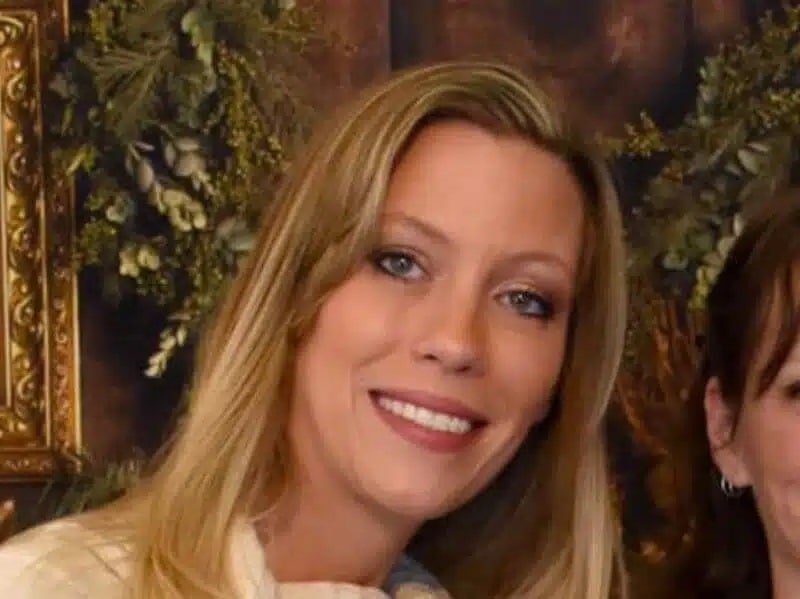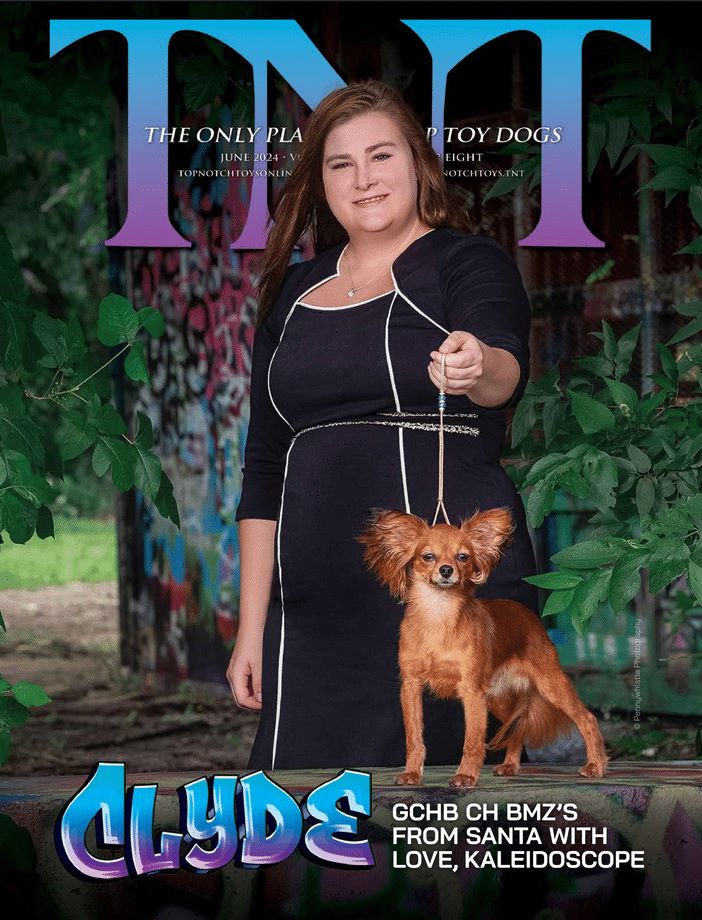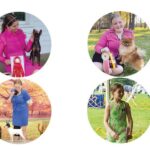Interview with Michelle Abels – Breeder of Brylee’s Angels Havanese
Where do I live? How many years in dogs? How many years as a breeder?
Michelle Abels: We live in the southwest suburbs of Chicago. We have been showing and breeding Havanese for 15 years.
What is my kennel name? How many dogs do I currently keep?
Michelle Abels: Our kennel name is Brylee’s Angels Havanese. We have nine dogs that currently live with us.
Which show dogs from the past have been my noteworthy winners?
Michelle Abels: To date, we have bred 35 Champions/Grand Champions. Some of the most meaningful to me, and most-winning, have been: The first dog that I finished, CH Dandy Daisy Warrior Rollo Roly, “Rollo,” and my first Bred-By champion, GCH Brylee’s Sweet Little Sister, “Sophie.” Our most-winning dogs have been GCHG Brylee’s Heavenly Walkin On Cloud Nine, “Walker,” GCHG Brylee’s Endless Love, “Cici,” GCHB Brylee’s Shiver Me Lil Booty, “Booty,” and GCHS Brylee’s Walk The Plank, “Patch.”
Which have been my most influential sires and dams?
Michelle Abels: My most influential dam has been my “Meisha,” Dandy Daisy Warrior Darcey. She was my very first Havanese. She hated the dog shows, so she never showed a day in her life—but she’s absolutely beautiful! Almost every dog I have goes back to her in one way or another. She’s 15 years old and still with us—the love of my life! Other influential dams for us have been GCH Brylee’s Sweet Little Sister, “Sophie,” CH Brylee’s Kick Rocks, “Cookie,” and GCH Brylee’s Always Rockin Autumn, “Autumn.” Our most influential sires have been GCH Brylee’s Ring Of Fire, “Miko,” and GCH Brylee’s Always Rockin Fall, “Gourdy.”
Can I talk a bit about my facilities? Where are my puppies whelped? How are they raised?
Michelle Abels: Our puppies are whelped in a bassinet in our living room. We have an “office” on our first floor, off of the living room, that has been converted into our “baby nursery” and that’s where our puppies are raised. We have the EZ Whelp boxes that are wonderful for being able to start small and expand the puppies’ space as they grow. We start litterbox training at three weeks old when they start walking, and as they get better and better with that we slowly expand their space. We handle, socialize, and work with our puppies every day, starting at birth with early neurological stimulation.
What is my “process” for selecting Show Puppies? Performance Puppies?
Michelle Abels: For show puppies, we start looking at them at birth; you can’t see much but some just always catch your eye! We evaluate them at 4, 6, 8, 12 & 16 weeks old. We bathe them, soap them up, and push the hair down to get a better look at actual structure without the hair getting in the way.
Then we stack them dry and just watch them running around. That’s where you’ll usually see your naturally well-put together dog, the one that just looks beautiful standing and moving naturally. One piece for me is shoulder angulation and neck! Neck is very important to our outline, so I have to have a dog with neck and they have to have the shoulder angulation to be able to hold their neck and head up high naturally, standing or moving.
Havanese are also great at Agility, Obedience etc. When I’m looking for a puppy for performance, what I look at the most is temperament. The most outgoing puppy will usually excel the most in Performance Events… but also, athleticism; the smallest puppy in the litter is probably not the best candidate for Agility.
How important are Breed Specialties to me? How important are Group Shows?
Michelle Abels: Very! I love attending our National! Being able to see, in person, so many dogs from around the country all in one place is invaluable. Not to mention all the fun and being able to get together with others in our breed from all over that we normally don’t get to see… it’s a blast! Group Shows are fun and nice, but are not as important to me as our Breed Specialties.
What are my priorities when it comes to breeding? What are the drawbacks?
Michelle Abels: My first priority has always been health above all! My very first dog was a “Maltese” that we got at a pet store before we knew any better. “Bailey” had health problems her whole life. She spent the first week we had her in the hospital and it never stopped. There was always something going on with her. That’s really what got me into breeding dogs. I felt like someone had to try to do better or all we will have will be dogs like that. So, health testing has always been my number one priority. Havanese have three tests listed as a requirement for a CHIC number; we do seven different OFA tests and DNA here on every dog before they’re ever considered for breeding.
The biggest drawback of breeding is one I’m sure every breeder struggles with: the fact that we are not gods and as much as we try, we cannot control everything. We are at the mercy of Mother Nature and she is not always kind.
How would I define “conditioning” as it relates to my breed? How important is coat care?
Michelle Abels: For me, “conditioning” is the physical and mental work done with the dog. They need to be fed, supplemented, and exercised to keep proper body condition. They also need regular practice with what they’re expected to do in the show ring. We start Conformation class with all of our show hopefuls at 12 weeks old, and they continue going to class once a week throughout their show career.
Coat care is hugely important for Havanese show dogs! At a minimum, all Havanese “in coat” need to be brushed daily and have a weekly bath to keep them clean and mat-free. Some dogs need extra things like heavy conditioning, wrapping, banding, etc. Every dog can have different coat needs, so you must adjust for each dog accordingly.
Are there any health-related concerns in my breed? Any special nutritional needs?
Michelle Abels: Yes. In Havanese, the main concerns, and the issues the Havanese Club of America suggests for health testing, are Luxating Patellas, Hip Dysplasia, and Juvenile Cataracts. Additional issues seen in Havanese are Elbow Dysplasia, Legg-Calve Perthes Disease, congenital cardiac disorders, and congenital deafness.
Most Havanese don’t require special diets, we feed all of our dogs and puppies Purina Pro Plan Performance 30/20 chicken and rice. Some dogs can be sensitive and may need the sensitive skin and stomach formula, but most do fine on the chicken. This is really all they need. We give coat supplements and extra vitamins for our show dogs and pregnant or nursing bitches.
Do I think my breed is supported by a sufficient number of preservation breeders?
Michelle Abels: Not really, anymore. We used to have way more people in the breed, but over the years many have disappeared. Sadly, the backyard breeders far outnumber us preservation breeders at this point in time.
Is my breed well suited to be a family dog? Who are the best candidates to own my breed?
Michelle Abels: YES! Havanese are one of the BEST family dogs! They have always been bred to be companion dogs; that is their one and only job and what they desire to do most. They are gentle natured, sweet, fun dogs. Havanese are happy to sit at your feet all day, but they’re always ready, willing, and able to get up and go do fun things whenever you are.
They are really a great choice for anyone, with the exception of very busy households and very small children. Households where everyone works 12 hours a day don’t make good homes for a Havanese. It’s just a miserable life for them since they thrive on companionship. It’s fine to leave them alone, just not all day, every day. For this same reason, I always say Havanese do better in pairs and I love it when there are two in the same home. This way, even when you are gone, they have each other.
Additionally, I don’t like Havanese for kids under five. Havanese are very sturdy for a Toy Dog and are not easily breakable, but they are still small and young puppies especially can be injured by children too small to understand how to treat the dog. Also, very young kids can be intimidating to them and they don’t always trust small toddlers, so for these reasons I don’t think they’re the best dog for kids under five. For everyone else, single homes or big families, they make wonderful pets!
What is the biggest misconception about my breed? What is my breed’s best-kept secret?
Michelle Abels: I think the Havanese’s biggest misconception and best-kept secret are the same thing! People see a small dog and think that they are yappy, snippy, or hyper dogs. When people say, “I don’t like little dogs,” it’s for all the reasons that Havanese are not! Unlike how some Toy Dogs can be, Havanese are not generally hyper. They are not aggressive and snippy, and they are not very yappy. Havanese will bark when something sparks their attention, but they don’t bark all day long for no reason. They are very good watch dogs, but aren’t typically annoying about it. I think these things make them a more desirable Toy Breed. I always say they have more of a Golden Retriever personality in a small package.
If I could share a comment or two with judges of my breed, what would I like to say to them?
Michelle Abels: I think the most important things, when you’re looking at a Havanese, are outline, front, and rear. If these things are not there, the dog is contrary to the breed and the whole picture is thrown off. When viewing a Havanese from the side profile, you should be able to know right away it’s a Havanese from its distinct outline. There should be a neck, balanced with an arched tail, and a slightly rising topline (not a ski slope). This is the picture a Havanese should make. They shouldn’t look like a ball of hair with legs.
Front and rear are also important. The front should NOT be bowed. As the Standard says, legs should be straight from any angle. And when viewing the rear, you should be able to see two feet, not just one criss-crossing over the other. In my opinion, these pieces are key to Havanese breed type.
Do I have any words of wisdom to pass along to newer breeders?
Michelle Abels: Again, to me, the most important part of breeding is health testing! You need to do your very best to try and bring the very best dogs possible into this world, for them and for the people who are going to love them. It’s just the right thing to do! Also, showing your dogs is very important. Dogs that don’t look and act like Havanese are supposed to should not be bred. Dogs need to be proven worthy of reproducing, so health testing proves the dog on the inside, and being able to earn the title of Champion proves the dog on the outside. Not every dog will make the cut; you have to let those go and only move forward with the best you can put out there. Have fun, but please be responsible with our beloved breed!
For a bit of fun, what’s the most amusing thing I’ve ever experienced with a Toy Dog?
Michelle Abels: Havanese are all little clowns by nature, but they all have their own little personalities and quirks that makes them unique—just like little kids. One of my funniest dogs was CH Brylee’s Sugar N Spice, “Layla.” One of her little quirks was that when you sang to her, she would literally dance! She’d pick up one foot at a time, back and forth, and if you changed the song she would change the beat of her dance to match the song. No one taught her to do that, she just did it on her own—hilarious little dog!









